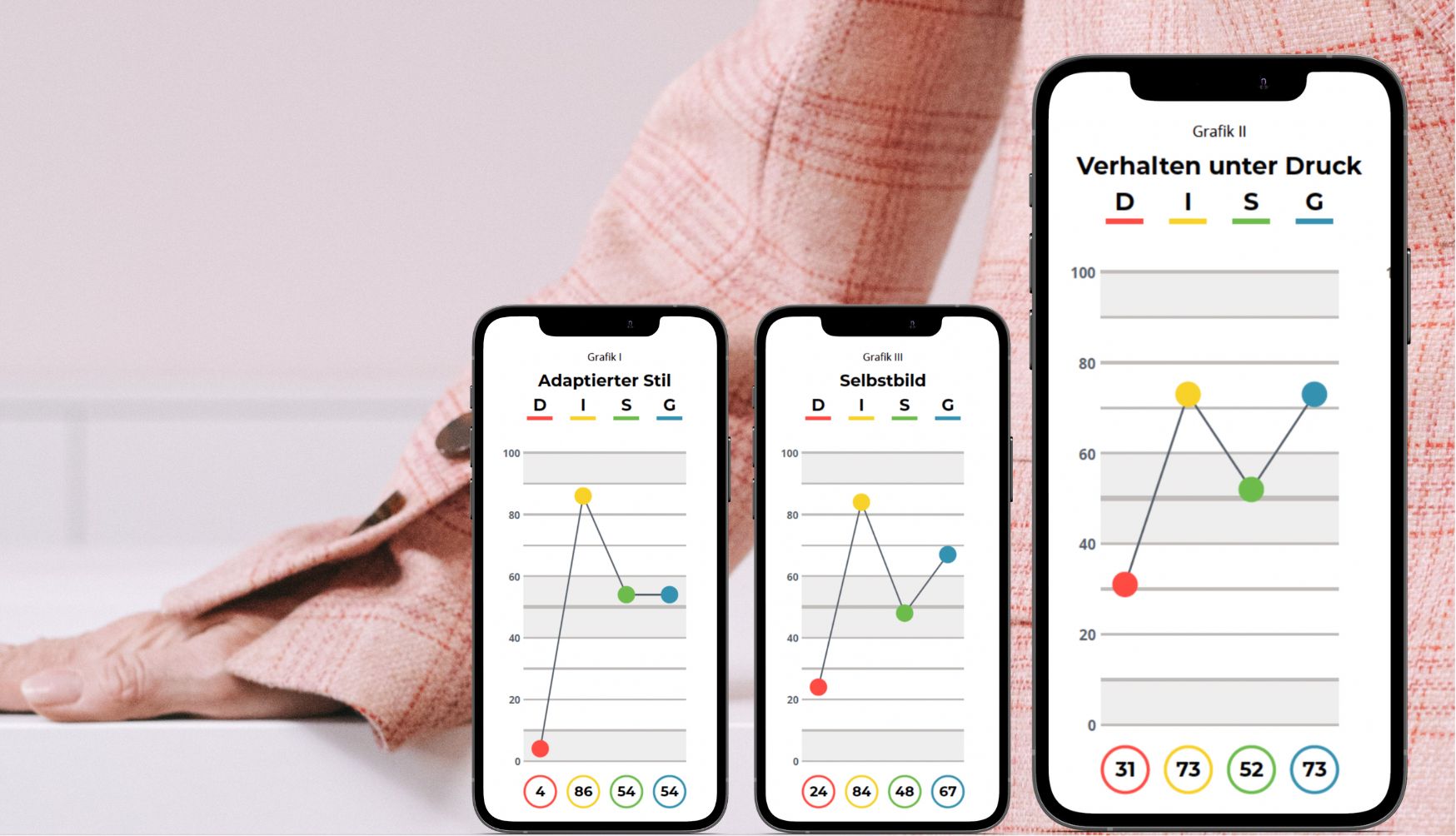What is a behavioral profile analysis?
A person's behavioral profile describes their personality, motivations, strengths, weaknesses, communication style and way of working. A behavioral profile analysis (BPA) is thus the process of examining a person's preferred behavior in specific situations to create a profile.
The analysis can be used in various contexts, e.g. in the composition of teams, in personnel development or even in the application process. Read more about the background and theory of BPA here.
The goal of a behavioral profile analysis is to gain a deeper understanding of a person's behaviors and characteristics in order to assess their suitability for a specific role or task and to identify possible areas for development. Used in the application process, behavioral profile analysis is designed to reveal whether an applicant fits a particular job profile or company.
What are the benefits of a behavioral profile analysis?
But it is not only companies that benefit from conducting a behavioral profile analysis. As an applicant, you can also gain a lot from it:
-
Self-awareness: A behavioral profile analysis can help you to better understand your own strengths, weaknesses, preferences and behavioral patterns. You will receive a comprehensive personality assessment, which will show you your abilities and limitations. You'll also gain insight into how you might be perceived by those around you, giving you an outside perspective.
-
Better self-presentation: Through the self-knowledge gained from the results of the behavioral profile analysis, you can better prepare yourself for job interviews and other professional situations. You now know even better where your strengths and skills lie and why you are suitable for a particular job.
-
Fit: The results are not only useful for presenting yourself to a potential employer. Through the analysis, you will also become aware of which work environments and tasks best suit you and your interests and strengths. Thus, you can better assess whether a job is also something for you in the long term.
-
BPA at Schulmeister: If you complete a behavioral profile analysis with us, it will help us to assess which employer might be a good fit for you, and we can approach you with customized job offers.

How do we use behavioral profile analysis at Schulmeister?
At Schulmeister, we integrate behavioral profile analysis into the application process at the request of our clients. We use the analysis of Scheelen-Institut for this purpose.
So when you apply to us and are invited for an interview, we ask you - depending on the position you are looking for and your individual profile - to fill out a questionnaire. This questionnaire asks you to choose from a number of personality traits, which you are asked to rate according to how much they apply to you in relation to your current behavior on the job. Subsequently, you will be asked to prioritize statements about different situations in the work context for you personally.
Depending on whether our interview with you takes place in person or via MS Teams, you can complete the BPA either at our office or online from home. Our consultants are trained to interpret the analysis and are happy to go over the results with you afterwards.
What exactly does the behavioral profile analysis want to determine?
The BPA we work with has a very complex structure. The following is a simplified summary of the cornerstone content of the results:
- Personal Behavior: This item refers to a person's basic behavioral style, which is also brought to professional activities. Examples: How does one handle criticism? How ambitious is one? Does one work precisely and/or in a structured manner or does one prefer to be creative and free? Is one communicative or does one tend to stay in the background?
- Value to the company: Here, the behavioral and essential traits of a person are prepared in such a way that the potential employer can classify what place the person could take in the team structure. The results can also be used as a recommendation for the future manager with regard to tools for employee management and motivation.
- Tips for communication: What kind of communication is valued by the person tested?
- Character traits: Adjectives are used to try to show the essential character traits in their intensity.
- Self-perception: How does the person evaluate himself and his behavior?
- Motivational factors: This is about personal preferences and needs by which one might want to be motivated in work.
- Interaction: Under what circumstances does the person perform at his or her best?
Important: There are no right or wrong answers in behavioral profiling. Therefore, we recommend that you do not put yourself under pressure and answer intuitively. The point is not to test you, but to get an assessment of your personal strengths and preferred behaviors in certain situations.
What do we do with the results? We match them to our job requirement profile. If the job requires a high level of accuracy, as is the case in accounting and payroll, for example, this high level should also be evident in the profile. For positions in sales, on the other hand, a high level of interaction and communication is important.
BPA as a knock-out criterion?
The job we introduced you to is your dream job? You are now afraid of being kicked out of the race with an unsuitable BPA? Don't worry - while the BPA is a tool for us in the recruiting process, there are other factors that play into the decision. The result of the analysis is therefore a criterion, but by no means the ultimate.
Good to know: The analysis result is to be considered valid for a period of about 12 months. People change, develop further and also adapt their behavior to a new environment.








